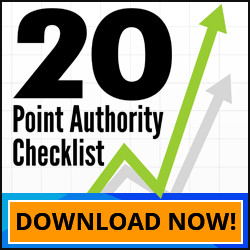To the internet savvy, some letters of the alphabet have special meaning. S, E and O, for example, wouldn’t mean Santa, Eskimo and Orange (well, at least not to me anyway!). Go ahead, make a guess.
Right on! Search Engine Optimisation.
Now, how about the letter A? Does that mean anything to you?
Let me give you a clue. This letter recently became the best buddy for a lot of people whose websites got kicked around by the Panda and Penguin updates.
Still can’t get it? Alright. ‘A’ means Audit.
It’s not the kind of audit dreaded by many every tax year. It’s the SEO site audit which would help site owners track all problems that need to be fixed for better conversion and improved sales rate. It may sound difficult but in reality it can be as easy as 1-2-3…4 and 5!
#1 Site Health Check-Up
This reveals the true condition of your entire website, like which parts of it are ill and require more immediate attention than others. The most common illnesses diagnosed through a site checkup are dropping traffic, current penalties and site indexing issues.
#2 Revisiting Your Site’s Appearance
Believe it or not, a site can be deemed as trustworthy (or not!) with just one glance at its layout. This is non-optimisation related stuff but it can directly affect any site’s conversion. Absence of a privacy policy, for one, makes an online visitor doubt the trustworthiness of a website.
#3 Site Blueprint Assessment
Architecture also plays an important role, specifically when websites get bigger through time. Easy navigation is what most visitors are after. If jumping from one page to another takes them more then a couple of seconds, they’d get fed up waiting and leave the page. That might not sound like a long time, but in a few seconds, they can easily launch another Google search and land on your competitor’s website.
Other points that must be considered are URL formatting, canonicalisation, overloaded advertisements and confusing call-to-action phrases.
#4 Onpage Optimisation Survey
This is where a follow-up on your initial keyword research and placement becomes significant. Be keen in using your keywords throughout your entire website – headings and page content alike. Also insert the keywords appropriately in the meta elements such as the description, keywords, title tags and keyword sections. However, don’t get tempted to keyword “stuff” – that’s a definite no-no! To get the best overall snapshot, make sure to test your home page, a top level page and a low level page. A top level page can be a category page while the low level page can be a product page.
#5 Offpage Optimisation Survey
Your off-page link profile must be given attention, too. Identify any link density problems first, then once you have a clear picture of the current situation of your links, work out how competitive they are in the market.
Just like any audit, make sure to record everything you find out, such as having a spreadsheet to note all possible areas of work that must be done. Your spreadsheet should be the driver of your audit.
Even though there’s more to it, that’s all you really need to know to conduct a reliable site audit. If there’s anything you want clarified or if you are finding it hard to bounce back from the Panda and Penguin updates on your own, click here and let my team and I give you a hand.


